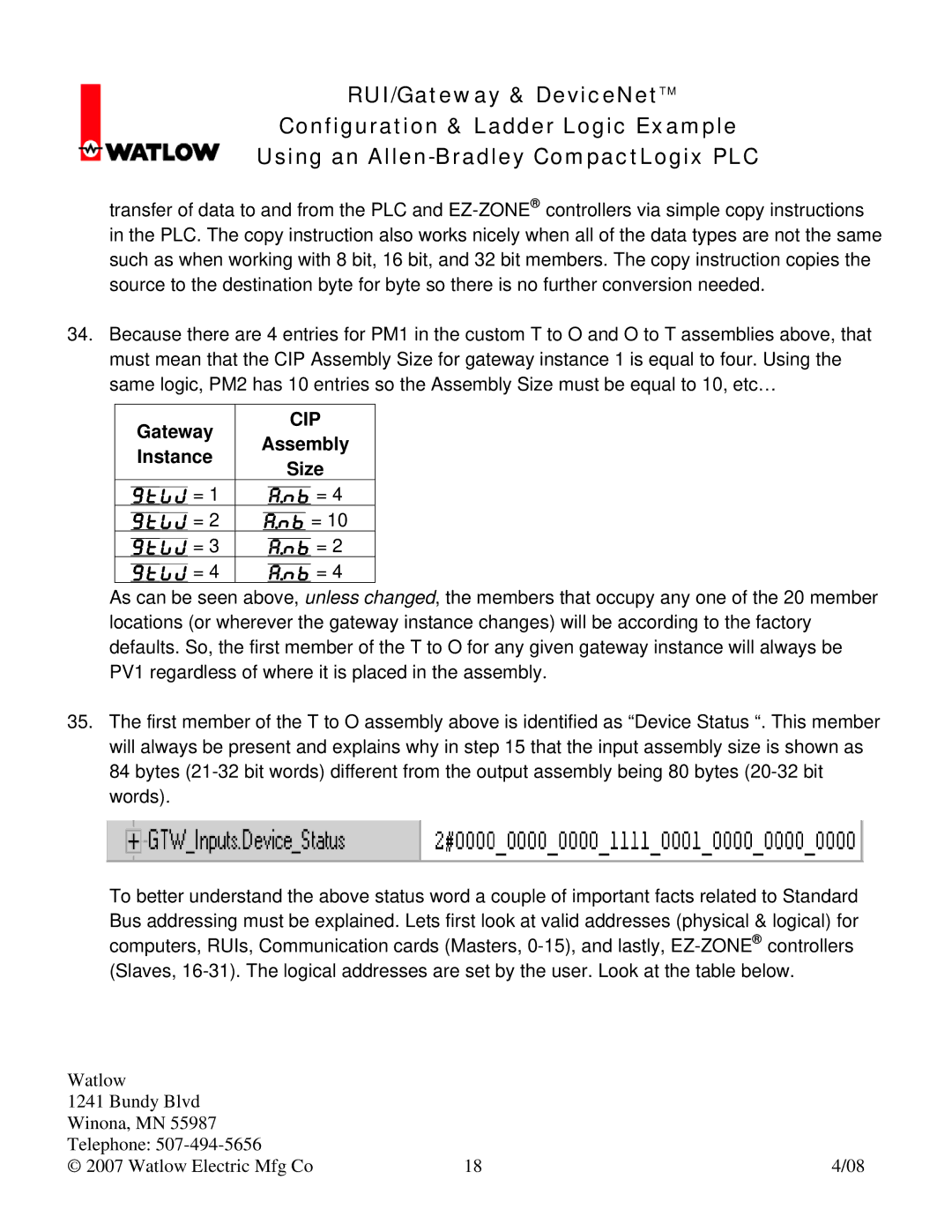
RUI/Gateway & DeviceNetTM
Configuration & Ladder Logic Example
Using an
transfer of data to and from the PLC and
34.Because there are 4 entries for PM1 in the custom T to O and O to T assemblies above, that must mean that the CIP Assembly Size for gateway instance 1 is equal to four. Using the same logic, PM2 has 10 entries so the Assembly Size must be equal to 10, etc…
Gateway | CIP | |
Assembly | ||
Instance | ||
Size | ||
| ||
Gtw = 1 | A;nb = 4 | |
Gtw = 2 | A;nb = 10 | |
Gtw = 3 | A;nb = 2 | |
Gtw = 4 | A;nb = 4 |
As can be seen above, unless changed, the members that occupy any one of the 20 member locations (or wherever the gateway instance changes) will be according to the factory defaults. So, the first member of the T to O for any given gateway instance will always be PV1 regardless of where it is placed in the assembly.
35.The first member of the T to O assembly above is identified as “Device Status “. This member will always be present and explains why in step 15 that the input assembly size is shown as 84 bytes
To better understand the above status word a couple of important facts related to Standard
Bus addressing must be explained. Lets first look at valid addresses (physical & logical) for computers, RUIs, Communication cards (Masters,
Watlow |
|
|
1241 Bundy Blvd |
|
|
Winona, MN 55987 |
|
|
Telephone: |
|
|
© 2007 Watlow Electric Mfg Co | 18 | 4/08 |
